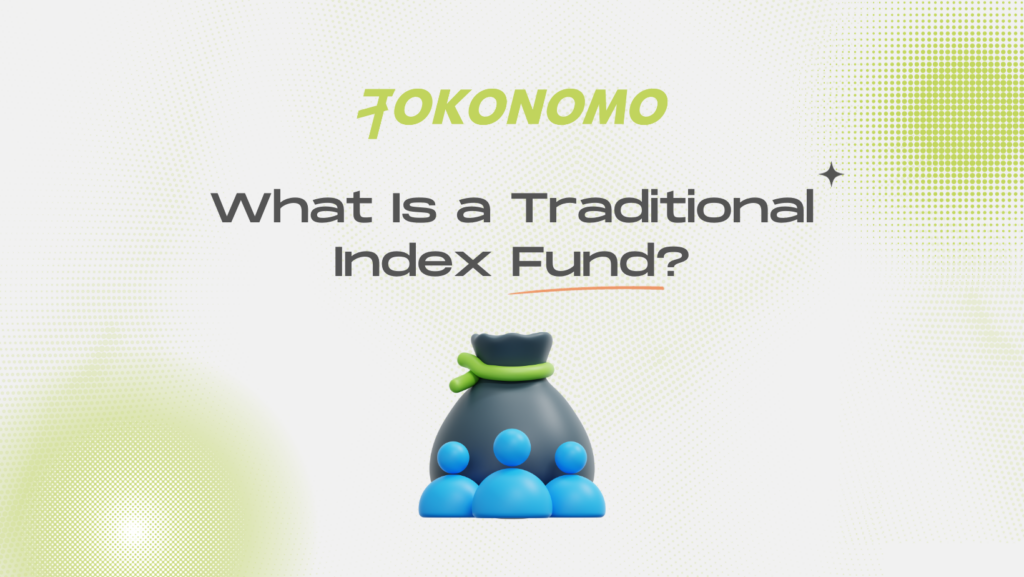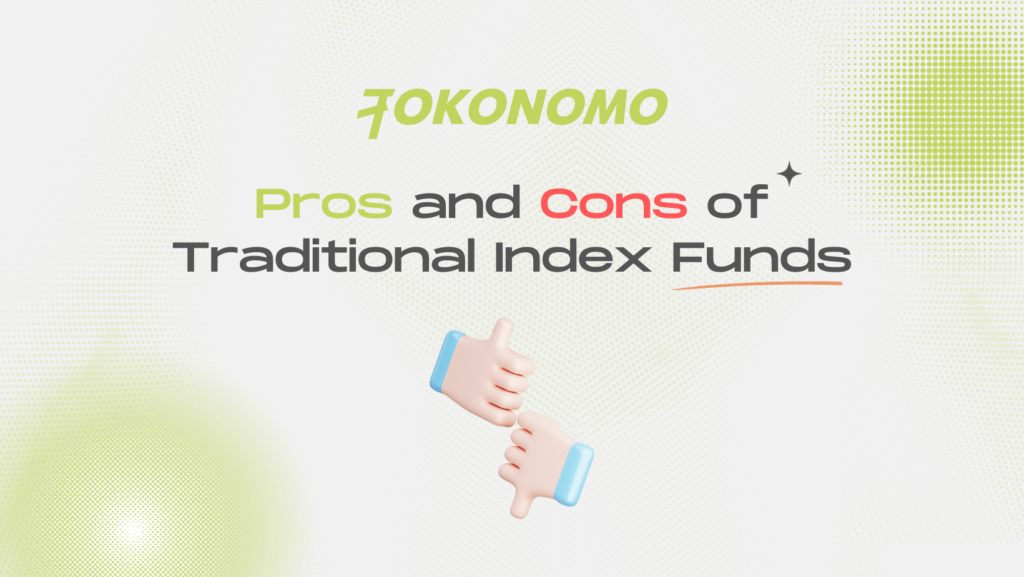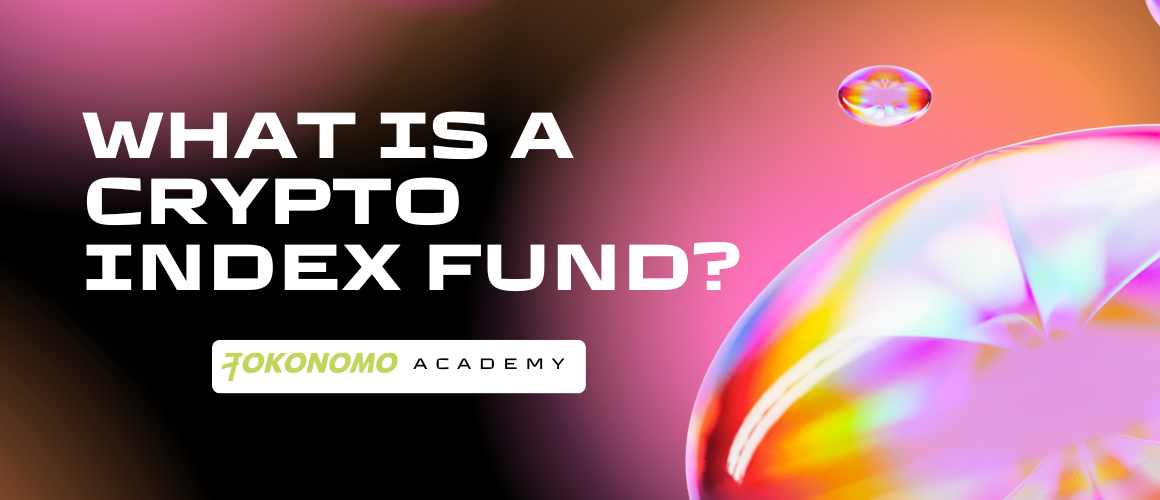Comprehending crypto index funds necessitates a degree of proficiency in market indexes. Essentially, a market index serves as a method for utilizing data to monitor and evaluate the stock market’s or a designated collection of companies’ performance along with their corresponding stocks.
A crypto index fund essentially adapts the concept of a conventional index fund by substituting the underlying assets with cryptocurrency tokens rather than company shares. Nonetheless, it’s important to note that crypto index funds remain a relatively recent innovation, and there are currently only a limited number of options in this category.
What Is a Traditional Index Fund?
Prior to delving into the realm of cryptocurrency index funds, it is advisable to first establish a solid grasp of the fundamentals associated with traditional index funds. At its core, an index fund can be described as an investment portfolio meticulously crafted to mirror a specific collection of underlying assets.
To be more precise, a conventional index fund is typically characterized as a subtype of mutual fund structured to replicate the composition and overall performance of a distinct financial market index, such as the S&P 500 or the Dow Jones Industrial Average.


But what exactly is a mutual fund? And what precisely constitutes a financial market index?
A mutual fund serves as a financial instrument through which individuals combine their resources into a professionally managed fund, with the ultimate aim of generating profits by investing in assets like stocks and bonds. The portfolio of a mutual fund is tailored to align with specific investment objectives established by the fund itself and its manager.
Conversely, a market index serves as a means of utilizing data to systematically monitor and gauge the performance of a stock market, or a segment thereof. Notable examples of market indexes encompass the S&P 500, the Dow Jones Industrial Average, and the FTSE 100.
- The S&P 500, for instance, meticulously monitors the stock performance of 500 large and pivotal publicly traded companies within the United States.
- In the case of the Dow Jones Industrial Average, it specifically tracks the stock performance of 30 particularly prominent companies listed in the U.S.
- On the other hand, the FTSE 100 is dedicated to tracking the stock performance of the 100 largest companies in terms of market capitalization on the London Stock Exchange.
Thus, within the context of an index fund, the investment portfolio is tailored to emulate the composition of a designated market index (as specified by the fund). The overarching objective of such a fund is to effectively replicate the overall performance of the designated market index in its entirety.
In stark contrast, a mutual fund involves the construction of a portfolio by a fund manager based on their assessment of what assets to actively invest in, with the ultimate aim of surpassing the performance of the broader market.
Pros and Cons of Traditional Index Funds
Index funds, often hailed as a passive investment strategy, are renowned for their ability to mirror the movements of the broader stock market. Rather than striving to outperform market fluctuations, their primary objective is to faithfully replicate the shifts in the market index. Numerous studies have shown that, over the long haul, passive funds tend to outshine their active counterparts in terms of performance.
Consequently, one of the primary merits associated with index funds is their perceived capacity to yield superior long-term outcomes when compared to actively managed funds. For instance, consider the annualized return of the S&P 500, which, from 1957 (when the index was initially expanded to encompass 500 stocks) until the conclusion of 2021, averaged an impressive 11.88%.


Furthermore, an index fund boasts the advantage of portfolio diversification, as it essentially consists of numerous miniature holdings in each constituent company of the index. This implies that your investment isn’t reliant on the fortunes of a single company but closely tracks the overall performance of the entire index, providing a more comprehensive exposure to the market.
In addition, owing to the fact that an index fund meticulously emulates the composition of its underlying index, the makeup of your portfolio undergoes minimal changes. This results in reduced operational and transaction costs, ultimately translating to lower fees for investors.
Nonetheless, it’s crucial to acknowledge the trade-offs. Index funds come with limited flexibility. Unlike actively managed funds, which possess the ability to divest underperforming stocks and, with skilled management, potentially outperform the broader market, index funds remain tethered to the performance of their benchmark. Consequently, in the event of a market downturn, an index fund will reflect a decline, whereas an actively managed fund might still manage to generate profits.
What Is a Crypto Index Fund?
Now that you have a grasp of what a traditional index fund entails, comprehending the concept of a crypto index fund becomes quite straightforward. Many developments within the realm of cryptocurrencies can be viewed as Web3 innovations applied to conventional financial markets and products. In the case of a crypto index fund, it adheres to this pattern, as it essentially borrows the fundamental framework of a traditional index fund and swaps out the underlying assets, replacing company shares and bonds with cryptocurrency tokens.
To illustrate this, let’s consider the S&P 500 Index Fund, which channels pooled funds into a collection of stocks that represent the 500 companies featured on the S&P 500 market index. In contrast, a crypto index fund directs invested capital into a diverse assortment of cryptocurrencies.


In simple terms, a crypto index fund serves as an investment vehicle that allows you to allocate your funds into the fund, and in turn, the fund allocates those funds into a specific cryptocurrency index. By doing so, the crypto index fund offers a convenient way to gain exposure to a diversified portfolio of digital assets, sparing you the need to individually purchase each token included in the fund.
What Sets a Crypto Index Fund Apart?
Certainly, there are several noteworthy distinctions to be made between traditional index funds and crypto index funds.
One prominent divergence pertains to the types of assets in which they choose to invest.
Furthermore, it is important to recognize that crypto markets are often marked by heightened volatility in comparison to their traditional counterparts. This heightened volatility can lead to more pronounced price fluctuations in crypto index funds, offering the potential for greater profits, but also exposing investors to larger potential losses.
In addition to the variance in risk and rewards, it’s crucial to consider the disparity in the variety of products and the accessibility they offer to consumers when comparing traditional and crypto index funds.
Traditional index funds encompass a wide array of options, numbering in the hundreds, if not thousands, each tracking diverse market indexes. On the other hand, crypto index funds constitute a relatively recent addition to the investment landscape, with only a limited selection currently accessible to the general public.
Conclusion
As the cryptocurrency landscape undergoes ongoing development and further maturation, it is probable that an increasing number of crypto index funds will emerge, providing additional investment avenues for everyday users. These investment vehicles have garnered significant popularity within traditional trading circles and are well-suited to cater to a diverse array of traders. The ever-expanding reach and appeal of cryptocurrency are continually drawing in new users, and individuals who favor the concept of trading index funds are expected to advocate for the proliferation of crypto-based alternatives.







